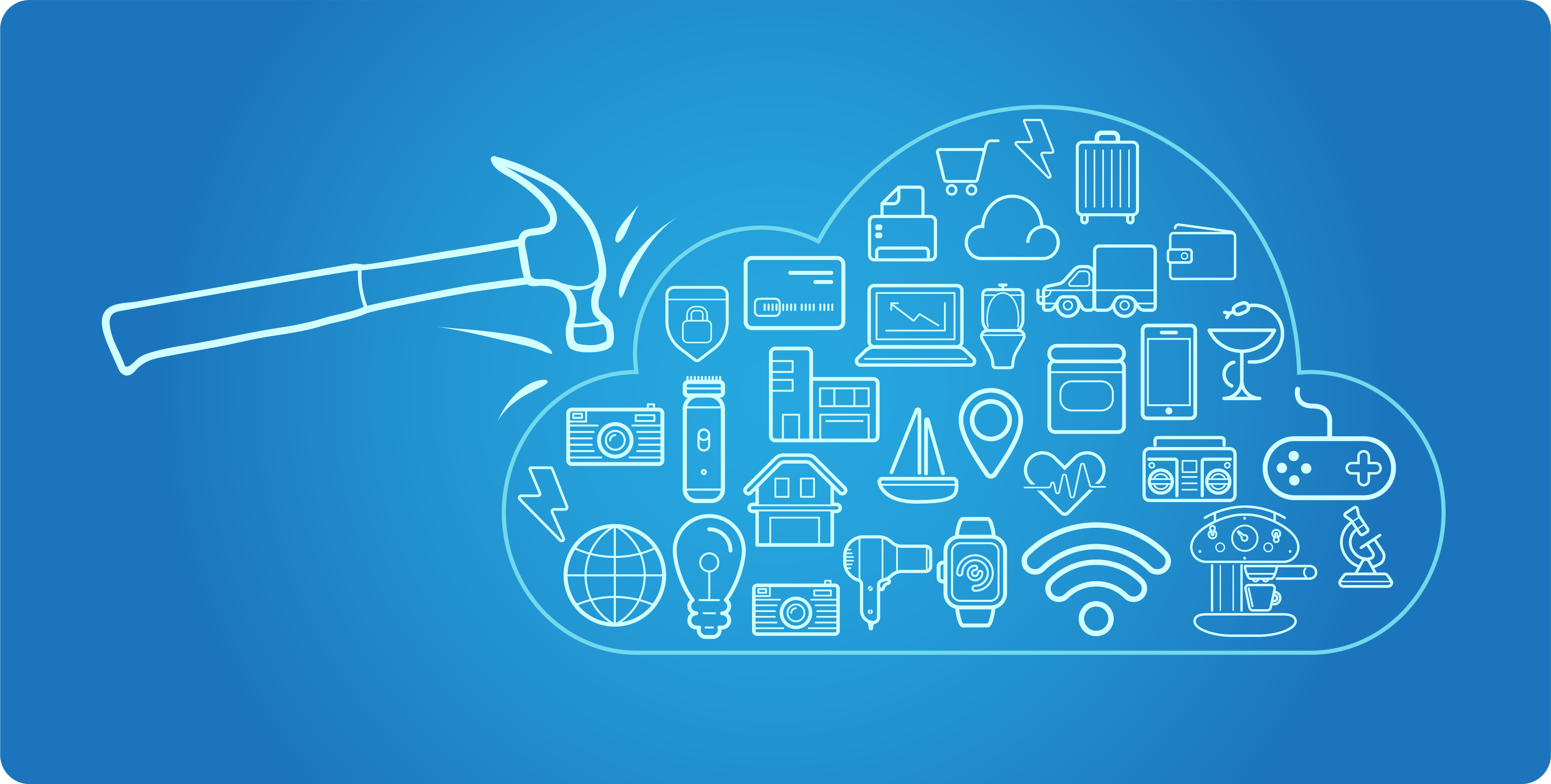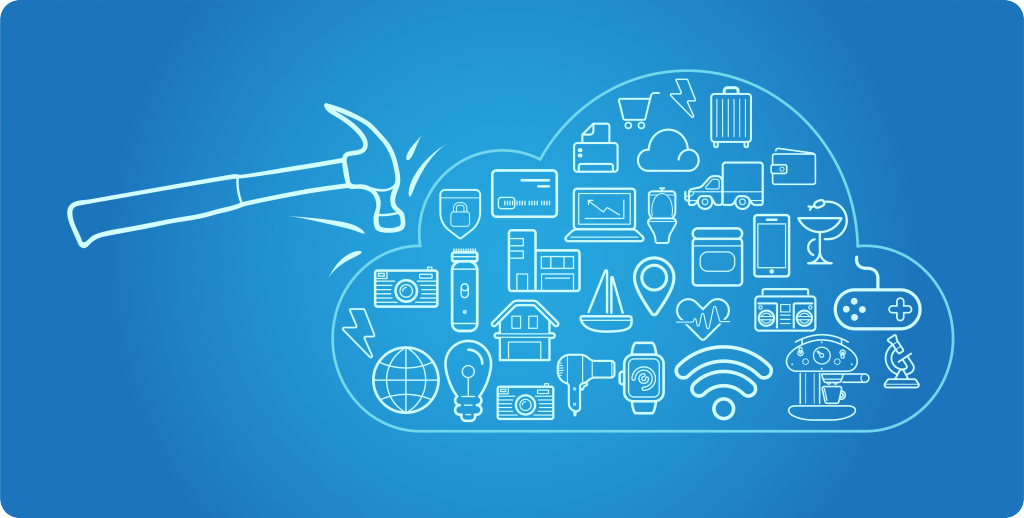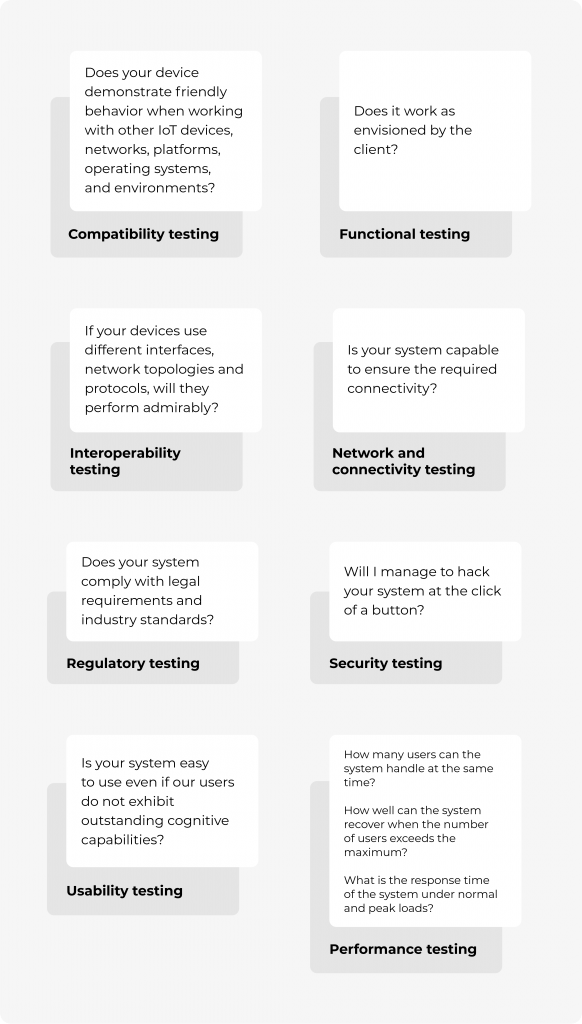No one is surprised to hear about smart cars, smart bulbs, smart loudspeakers, smart glasses, smart surveillance cameras, smart dog collars, smart kitchen appliances… They all are connected, they all are interdependent. As technologies in general and sensors in particular are becoming more available and the size of devices is getting smaller, with functionalities improving at the same time, we will soon face the Internet of Everything with its own laws. Just imagine the scale of the disaster if something goes wrong.
written by:
Anastasia Borodinets
No one is surprised to hear about smart cars, smart bulbs, smart loudspeakers, smart glasses, smart surveillance cameras, smart dog collars, smart kitchen appliances… They all are connected, they all are interdependent. As technologies in general and sensors in particular are becoming more available and the size of devices is getting smaller, with functionalities improving at the same time, we will soon face the Internet of Everything with its own laws. Just imagine the scale of the disaster if something goes wrong.
Smart explosion
Humankind evolves, as do things that come with it. Internet of Things devices have been picking up stream in the recent years due to Internet availability, cloud deployment, and the spread of microservices. As the statistics show, the amount of IoT connected devices is going to hit 75 billion by 2025 — ten times the current human population.
Due to the combination of various devices, communication gateways, platforms and protocols, the Internet of Things technology may potentially present problems related to performance, security, interoperability, functionality, and scalability. So, to avoid unnecessary and unexpected troubles, you shouldn’t miss out on testing before deploying large-scale systems.
Let’s test it!
A fully-fledged IoT testing system incorporates sensors, mobile apps, connectivity, environment, and web portals. At the same time, test scenarios may vary depending on the application or system design.
Any IoT software development firm is potentially aware of crucial issues that may impact your system’s performance. As a result, software developers provide plenty of testing practices that enable them to scrutinize the project for vulnerabilities and defects.
Most Common Types of IoT Testing
To perform or not to perform? That is the question.
With the IoT market expanding at a fast rate, manufacturers are trying to provide a wide selection of low-cost sensors. To keep expenses down, they may miss or sacrifice some functions, thus making devices more exposed to security, performance, and reliability issues.
The most common restrictions of IoT sensors include small physical sizes, limited power sources, restricted amounts of memory, and limited processing power. This consequently leads to a lower number of processes, and as a result, reduces the size of applications. As manufacturers struggle to overcome these limitations, they may overlook crucial processes and expose both sensors and devices to a wider range of vulnerabilities.
The aim of performance testing is to establish the benchmark behavior of the system, rather than to look for bugs, which should be done during functional testing. The benchmark (or limit capabilities) and standard of the application are set in terms of such attributes like speed, response time, throughput, resource usage, and stability. All of them are normally inspected during a performance test.
Performance testing can be subdivided into such types of testing like load testing, volume testing, stress testing, scalability testing, stability testing, configuration testing, restore/disaster testing, capacity testing, reliability/endurance testing, etc. Each of them is designed to detect or solve specific problems in a system.
The list of benefits when opting for performance testing is limitless. Let’s take a look at some of them:
- When the tester identifies flaws, it creates an opportunity to address performance, interoperability, security, and safety issues. For example, sending unencrypted data makes it possible for criminals to intercept and access sensitive information. This enables hackers to view live feed from surveillance cameras and poses a risk since this data can be sold to a competitor.
- Skillful testing accelerates the time-to-market for products.
- It improves the user experience by ensuring seamless performance across a wide range of devices and platforms.
When high performance meets scalability
IoT devices generate data continuously. This data needs to be saved and processed for future decisions, which can be made immediately or later by using business intelligence (BI) analytics.
The IoT helps in improving operational performance and cost optimization. And to achieve this, IoT systems must be designed with the idea of high performance and scalability.
To evaluate these two key attributes of an IoT application, it is important to understand the business goal for which it is designed. In addition, to assess performance, it is necessary to simulate real-world workload, which can be created using business requirements, historic data and future growth requirements, type of devices, network conditions, usage patterns, and geographic spread.
Application usage patterns are obtained by analyzing the IoT app’s logs for peak and normal hours. Using these data points, different workload conditions can be created for peak usage, normal usage, future growth, and daylong/multiday simulations.
Where to aim when testing
Protocols and performance testing tools
IoT devices do not stick to a standard protocol set to establish the connectivity between an IoT application and devices as such. IoT protocols may range from HTTP, AllJoyn, IoTivity, MQTT, CoAP, AMQP, to name a few. They are still in the early stages of development, and different IoT solution vendors come up with their specific protocols/sets. These protocols are continuously evolving alongside with IoT applications, and current performance testing tools may or may not support them.
Geographical spread and network conditions
IoT devices/sensors may be located across the world and use different networks to connect to IoT servers to manage data. As part of performance testing, software testers need to simulate devices from different locations with the corresponding network technologies like 2G, 3G, 4G, Bluetooth, WiFi, etc.
To simulate the geographical spread, such tool as JMeter is integrated with cloud solutions like Amazon web services (AWS). Using AWS integration, JMeter is able to generate the traffic from different locations to an IoT application to mimic the geographical spread and network latency.
Load conditions
It is best to load-test applications by modelling real-world conditions. These patterns are complex in their nature and it will be extremely difficult to collect and predict the data. To recreate such conditions, we may end up simulating millions of devices.
To perform this task, JMeter is integrated with the cloud using automated scripts. These scripts will create the required number of load generators in the cloud, copy the scripts, test data, and then execute, collect, and process the obtained results.
Real-time decision-making
Some IoT manifestations may require the data from a device that needs to be processed at runtime, leading to a corresponding decision being taken. These decisions are generally notifications/requests to different devices/sensors/systems which perform particular actions. As part of testing, these notifications/requests need to be monitored for performance indicators.
IoT application monitoring and BI processing
Monitoring is essential for any application. It helps us understand the system’s behavior in real-world conditions. For IoT applications, both the application and the backend BI systems need to be monitored. This will help understand data processing, both in terms of its volume and accuracy.
Face the testing challenge
Testing IoT systems is usually a challenge due to the mixture of conventional and non-standard hardware and software. No matter which thing you wish to make smarter, it will be for nothing if its software doesn’t rock.
Performance testing goes beyond devices and sensors and includes the added complexity which comes with Big Data, i. e. huge volume, velocity and variety. The classic test approach doesn’t fit in the IoT testing model. Ideally, it would be nice to have a universal solution that would cover all leading IoT protocols and network simulations.
If an enterprise is deploying an IoT solution or building a new IoT product, the skilled and experienced team of Qulix Systems can help in identifying vulnerabilities and risks. We find solutions and implement them to mitigate security issues across the client's ecosystem.
Our company offers customized quality assurance and testing services and solutions for various industries. More on our website or via request@qulix.com.

Contacts
Feel free to get in touch with us! Use this contact form for an ASAP response.
Call us at +44 781 135 1374
E-mail us at request@qulix.com










